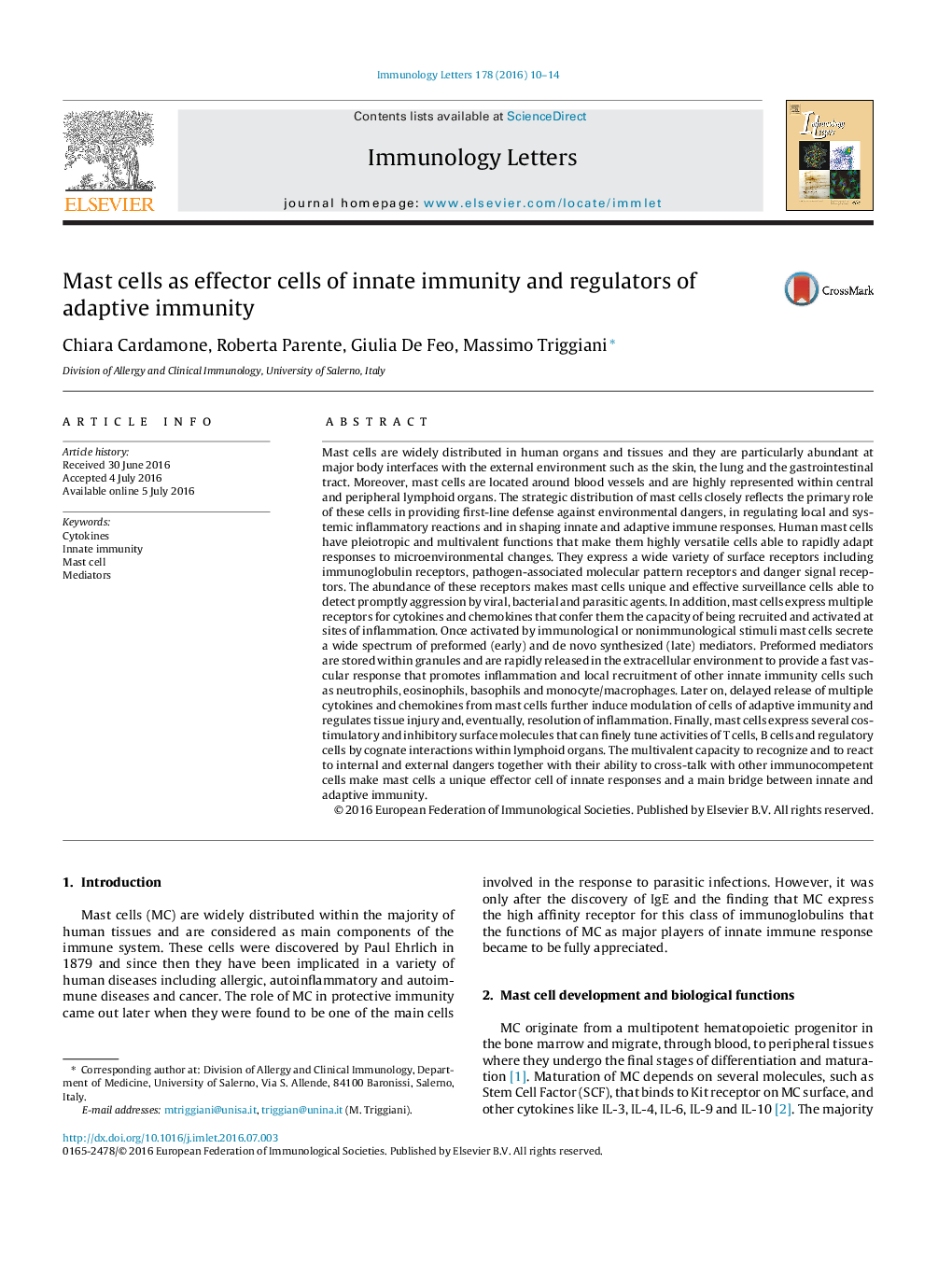| کد مقاله | کد نشریه | سال انتشار | مقاله انگلیسی | نسخه تمام متن |
|---|---|---|---|---|
| 6116934 | 1591548 | 2016 | 5 صفحه PDF | دانلود رایگان |
- Mast cells are strategically located at major body surfaces and along blood vessels.
- They play a key role as first line defense against bacterial, viral and parasitic infections.
- Mast cells display a wide set of receptors which recognize and internalize pathogens.
- Activation of mast cell receptors induces release of mediators that promote inflammation and recruitment of cells of innate immunity.
- Mast cells shape adaptive immunity through soluble mediators and cognate interactions with T, B and Treg cells.
Mast cells are widely distributed in human organs and tissues and they are particularly abundant at major body interfaces with the external environment such as the skin, the lung and the gastrointestinal tract. Moreover, mast cells are located around blood vessels and are highly represented within central and peripheral lymphoid organs. The strategic distribution of mast cells closely reflects the primary role of these cells in providing first-line defense against environmental dangers, in regulating local and systemic inflammatory reactions and in shaping innate and adaptive immune responses. Human mast cells have pleiotropic and multivalent functions that make them highly versatile cells able to rapidly adapt responses to microenvironmental changes. They express a wide variety of surface receptors including immunoglobulin receptors, pathogen-associated molecular pattern receptors and danger signal receptors. The abundance of these receptors makes mast cells unique and effective surveillance cells able to detect promptly aggression by viral, bacterial and parasitic agents. In addition, mast cells express multiple receptors for cytokines and chemokines that confer them the capacity of being recruited and activated at sites of inflammation. Once activated by immunological or nonimmunological stimuli mast cells secrete a wide spectrum of preformed (early) and de novo synthesized (late) mediators. Preformed mediators are stored within granules and are rapidly released in the extracellular environment to provide a fast vascular response that promotes inflammation and local recruitment of other innate immunity cells such as neutrophils, eosinophils, basophils and monocyte/macrophages. Later on, delayed release of multiple cytokines and chemokines from mast cells further induce modulation of cells of adaptive immunity and regulates tissue injury and, eventually, resolution of inflammation. Finally, mast cells express several costimulatory and inhibitory surface molecules that can finely tune activities of T cells, B cells and regulatory cells by cognate interactions within lymphoid organs. The multivalent capacity to recognize and to react to internal and external dangers together with their ability to cross-talk with other immunocompetent cells make mast cells a unique effector cell of innate responses and a main bridge between innate and adaptive immunity.
Journal: Immunology Letters - Volume 178, October 2016, Pages 10-14
